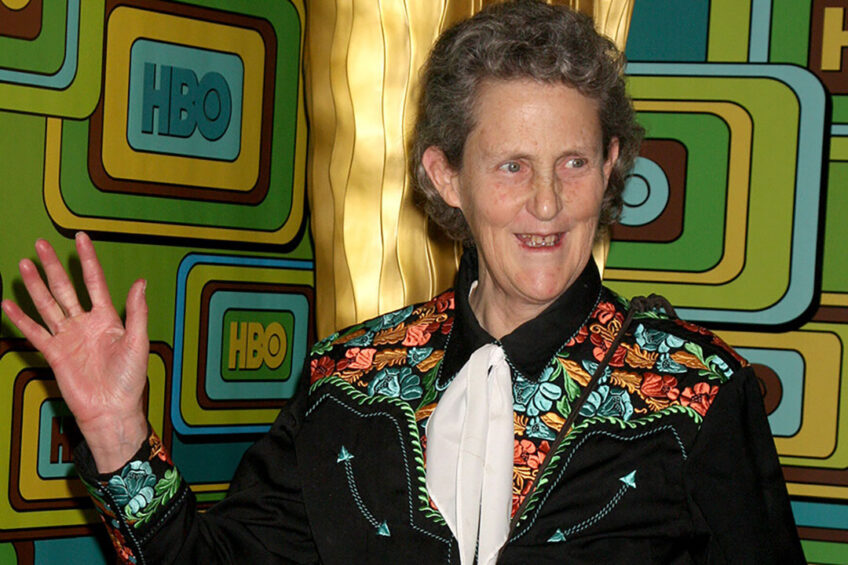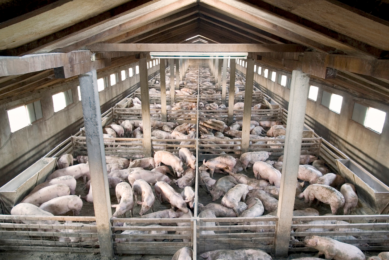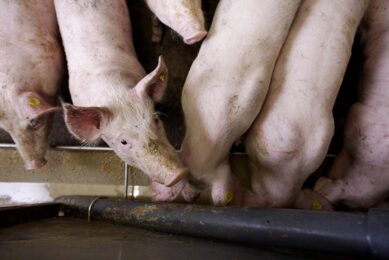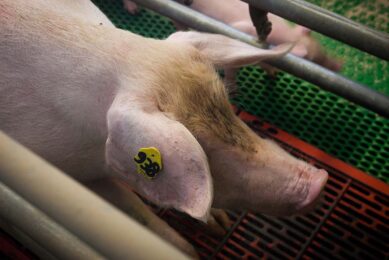Dr Temple Grandin: “Covid-19 was a disaster for the pork industry”

“From both a sustainability and animal welfare standpoint, Covid-19 was a disaster for the US pork industry.” That is the conclusion of Dr Temple Grandin, professor in the department of animal science at Colorado State University, in a new research paper in which she does not mince words.
Dr Grandin asserts that programmes must be put in place so that what happened in 2020 in the US – when large numbers of healthy pigs were destroyed on-farm because of severely curtailed slaughter plant capacity – never happens again. Massive capacity reductions were caused by physical distancing requirements and by temporary plant shutdowns to stop Covid-19 transmission, worker illness and death. The situation was exacerbated because US pig production had grown to address the import needs of China, where African Swine Fever had ravaged the commercial pig population from 2018.
Waste of food
“It was a complete mess, a terrible mess in terms of animal welfare,” Dr Grandin says, “and it was a horrible waste of food. There were food kitchens begging for food and we sent pigs to the dump.” It is estimated that about 350,000 pigs were euthanised on US farms in 2020.
Beef and poultry industries less affected
In comparison, the US beef and poultry industries were less affected by the pandemic, notes Dr Grandin, because it is easier to slow the growth of beef cattle, and chickens have a shorter life cycle. Dairy sectors in the US (and in other countries such as Canada) also had to dump milk in the early days of the pandemic because milk could not be exported to Mexico as usual.
There have been 2 demonstrations that illustrate the potential of a portable electric method to be an economical and humane method for mass euthanasia of pigs on the farm
Euthanasia
Some of the euthanasia methods used to depopulate US pig farms were not aligned with those approved by the American Veterinary Medical Association (AVMA). As Dr Grandin states in her paper, for example, “There was a big controversy in the US about the use of ventilation shutdown as a method of killing pigs on the farm.” She adds, “The reference provided in the AVMA depopulation guideline clearly showed that shutting off the ventilation systems with no additional interventions does not work.”
Video audits should never replace in-person audits
Dr Grandin notes that the pandemic also had a detrimental effect on animal welfare inspection and the third-party auditing programmes of large-meat buyers. Most in-person audits in slaughter plants were cancelled and done by video, but, in her view, video audits should never completely replace in-person audits.
If large numbers of pigs ever have to be euthanised again on US farms, Dr Grandin believes portable electrical stunning systems may be the best option. These systems maintain the same high welfare standards required for electric stunning in a processing plant. “Research studies on electrical stunning methods used in commercial slaughterhouses have shown that when a sufficient current is passed through the brain, pigs… will become instantly unconscious,” she states in her paper. “There have been 2 demonstrations that illustrate the potential of a portable electric method to be an economical and humane method for mass euthanasia of pigs on the farm.”
Prototype portable stunning system
Indeed, one of Grandin’s former students (Dr Ruth Woiwode, now assistant professor of animal behaviour and wellbeing at University of Nebraska, Lincoln) and Dr Benny Mote have designed and built a prototype portable stunning system. The work began in April 2020 with funding from the National Pork Board in response to the supply chain interruption caused by Covid-19. The Nebraska Department of Agriculture has secured a grant to purchase the unit, and Woiwode explains that it will likely undergo some modifications and refinement. She and her colleagues will continue to work with department staff to provide training. The private sector has also expressed interest in the system and, in future, it may become commercially available.
Proactive euthanasia solutions
Dr Woiwode believes that if the US pork industry wants to keep public trust and continue to exist, it must have proactive euthanasia solutions in place in case of emergencies. The industry, she says, cannot afford the risk of lost public trust associated with methods that do not consider animal welfare first.
Preventing on-farm euthanasia
Should a situation like Covid-19 occur again, Dr Grandin believes the number of pigs that may have to be destroyed on the farm can be vastly reduced by changes at large pork plants. There, processing could quickly change to production of either carcass pork or large cuts such as loins, hams, shoulders or bellies. Dr Grandin points out that before the pandemic, there was at least one large US pork plant that was producing whole hog carcasses for export to China. She believes producing carcasses or large cuts could probably be done with less than half the normal number of plant workers.
From there, Dr Grandin explains that there are many locations with industrial-sized kitchens and large refrigerated spaces where the pork could be further processed. These include hotels, military bases, educational institutions and prisons. In addition, she notes that truckloads of meat could also be sold in many communities in the US where there are people with the knowledge and tools to quickly cut up a pig carcass. The carcasses and large cuts would already have been inspected by the federal Food Safety Inspection Service/USDA at the processing plants.
Planning at regional level
This sort of planning, says Dr Grandin, would not need to be done at the federal level but only at the regional level in states where there is a large amount of pork production. She does not believe that government legislation would necessarily be required to ensure the planning occurs, but it would require the leadership of the major pork industry players.
Many people will say big is bad. The real problem is that big is fragile
Smaller plants
Dr Grandin also calls, however, for a less-centralised pork slaughter and distribution system with more diversified options. She notes that in normal times, while consumers and companies favour the lower costs and efficiencies of a centralised system with large plants due to the economies of scale, when a disaster hits, decentralised systems prove their worth. “Many people will say big is bad,” she says. “The real problem is that big is fragile.”
It is a positive development that the US Department of Agriculture is currently seeking comments on how to reimagine US agri-food supply chains and also how to target pandemic-related stimulus programmes for “long-term, systemic change that results in food supply chain resilience”. In particular, comments are sought on aspects such as bolstering local and regional food systems and developing new market opportunities. The request for comments closed on 21 May.
Whether or not these comments will lead to actual change is anyone’s guess, but in Dr Grandin’s view, “if you have enough problems, if you break too many times, change will happen. People got scared seeing the grocery store shelves stripped and they don’t ever want to see that happen again. And it’s already been happening in beef. I have had six people contact me about building small and medium plants, and these plants are getting built.”











